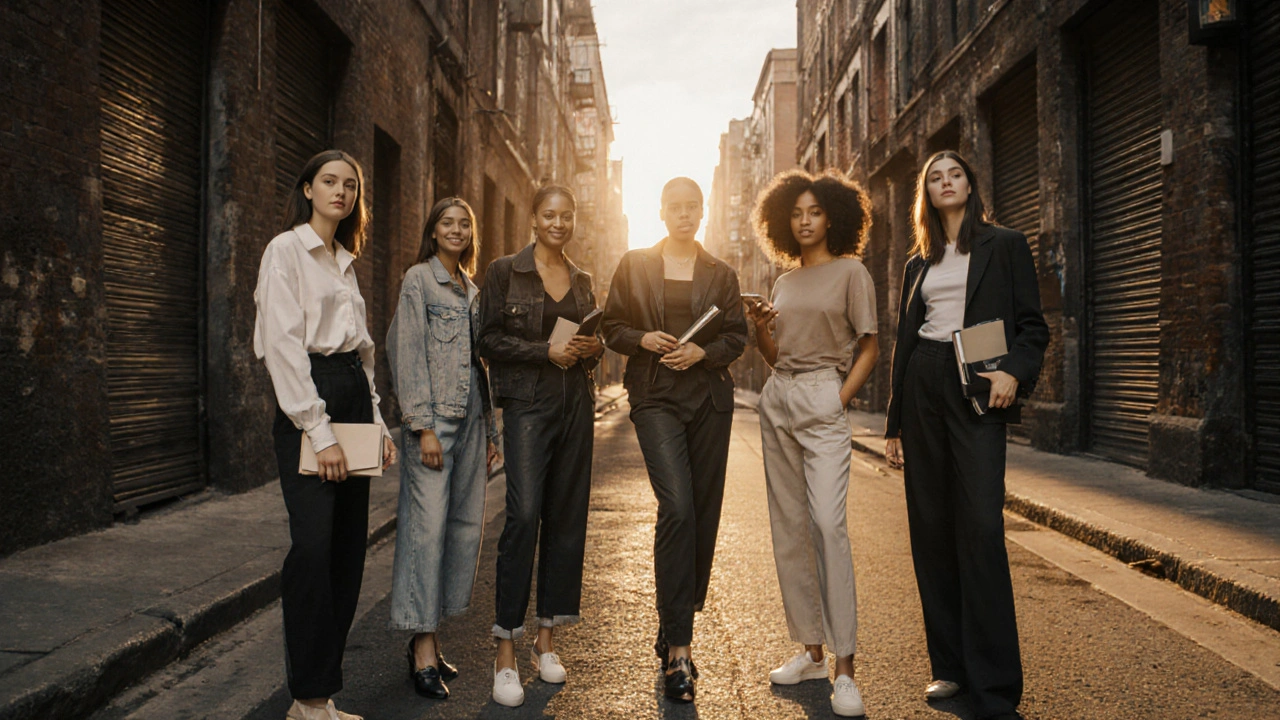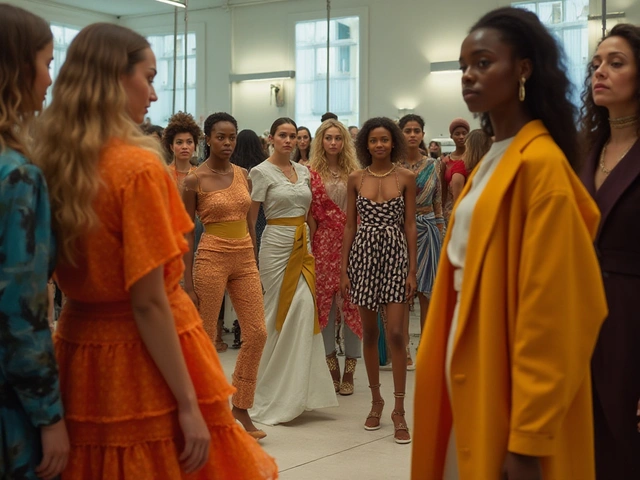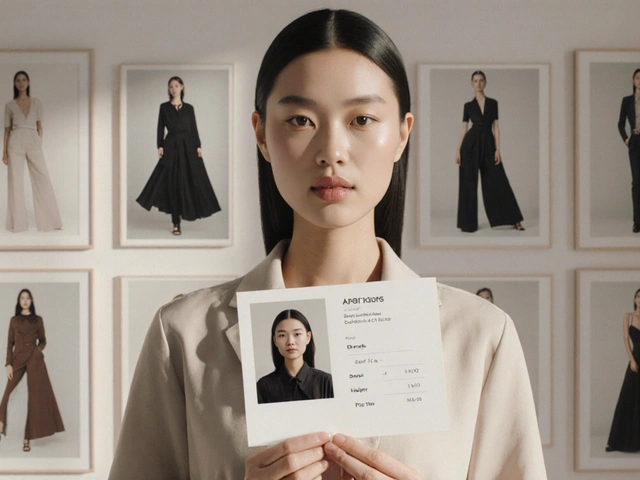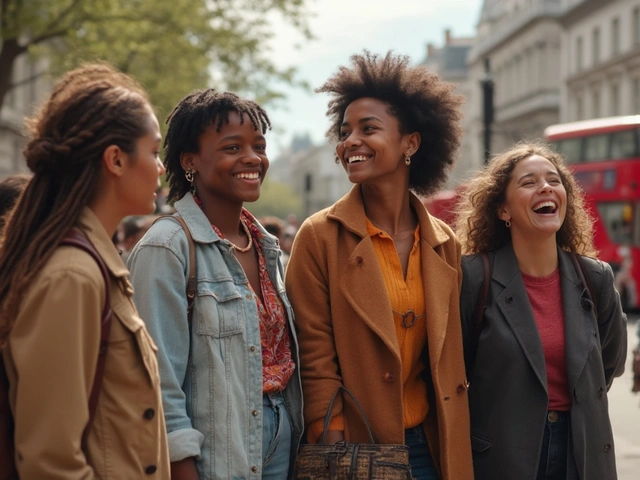Success in modeling doesn’t come from looking a certain way-it comes from showing up, staying consistent, and knowing how to navigate the noise. Many people think it’s all about being tall, thin, or photogenic. But the women who’ve built lasting careers? They’ll tell you it’s something else entirely.
It’s Not About Being Perfect-It’s About Being Professional
Naomi Campbell didn’t become a legend because she had the ‘perfect’ face. She became one because she showed up on time, knew her lines, and never let a bad day ruin her reputation. Same with Cindy Crawford. She didn’t wait for the lighting to be perfect. She worked through headaches, long flights, and back-to-back castings because she treated modeling like a job-not a dream you wait for.
One model, who’s walked for Chanel and appeared in Vogue five times, told me this: ‘I never got the job because I was the prettiest. I got it because I was the easiest to work with.’ That’s the truth most agencies won’t print on their websites. They want someone who doesn’t throw tantrums, doesn’t cancel last minute, and doesn’t act like the shoot is beneath them.
Learn How to Walk-Really Learn It
Walking isn’t just stepping in heels. It’s about rhythm, balance, and presence. A lot of new models think they can wing it. They see runway videos and copy the pose. But the women who book the big shows? They’ve trained for months.
Adriana Lima spent six months walking in front of a mirror before her first major show. She didn’t just practice the walk-she practiced how to hold her head, where to look, how to breathe. ‘If you’re tense, the camera sees it,’ she said in a 2023 interview. ‘If you’re relaxed, even a simple pose looks powerful.’
Most agencies now offer basic walk training. But if yours doesn’t, find a local modeling coach or even a dance studio that teaches posture and movement. You don’t need to be a ballerina. You just need to move like you own the space.
Build Your Own Brand-Before the Agency Does
Instagram isn’t just a place to post selfies. It’s your resume. The top female models today don’t wait for agencies to find them. They build visibility on their own terms.
Karlie Kloss didn’t wait for a magazine cover to start speaking up. She used her platform to talk about coding, education, and women in tech. That didn’t make her less of a model-it made her more valuable. Brands don’t just want someone who looks good in a dress. They want someone who connects with an audience.
Even if you’re not ready for a million followers, start with purpose. Post behind-the-scenes shots. Share what you’re learning. Show your personality. A post about how you prepared for a casting-what you ate, how you slept, how you stayed calm-gets more engagement than another filtered photo of your face.

Reject the ‘One Size Fits All’ Myth
There’s no single body type that gets you hired anymore. The industry’s changed. Curvy models like Ashley Graham and Paloma Elsesser are on magazine covers. Trans models like Valentina Sampaio walk for Victoria’s Secret. Women over 40 are booking campaigns for L’Oréal and Aerie.
One model, who’s 5’8” and wears a size 12, told me she got her first major campaign after sending a simple email to a brand’s casting director: ‘I’m not what you usually cast. But I’m the woman your customers actually see in the mirror.’ She got the job. The brand didn’t need another skinny girl. They needed someone real.
If you don’t fit the old mold, that’s not a problem. It’s your advantage. Brands are desperate for authenticity. Your uniqueness isn’t a flaw-it’s your market.
Handle Rejection Like a Pro-Not Like a Personal Failure
Rejection isn’t about you. It’s about fit. A casting director might say ‘no’ because you’re too tall, too short, too ethnic, not ethnic enough, or because the client just wanted someone with blue eyes. None of that has anything to do with your worth.
Tyra Banks said it best: ‘Every ‘no’ is just a ‘not right now.’’ She got turned down by 12 agencies before one finally signed her. That doesn’t mean she wasn’t good. It meant the timing, the look, the vibe-none of it matched what they needed that week.
Keep a log. Write down every casting you go to, who you met, what you wore, and what they said. After 20 rejections, you’ll start seeing patterns. Maybe you’re always told you’re ‘too quiet’-then work on your confidence. Maybe you’re told you’re ‘not commercial enough’-then study ads for Target or H&M. Learn what ‘commercial’ actually means.

Network Like You Mean It-Not Like You’re Asking for a Favor
Networking isn’t about handing out your card at a party. It’s about building real relationships.
One model in London started showing up to industry events not to be seen, but to listen. She asked photographers what they were struggling with. She thanked stylists for their work. She didn’t ask for a job. She asked, ‘How can I help?’
Three months later, a photographer she’d talked to twice called her for a test shoot. That shoot turned into a campaign. She didn’t beg. She showed up. She was helpful. And people remember that.
Don’t just follow people on Instagram. Comment on their work. Share their posts. Send a quick message after a show: ‘I loved your lighting today.’ That’s how real connections start.
Know When to Walk Away
The hardest lesson? Sometimes, the best thing you can do is say no.
One model I spoke with turned down a $10,000 gig because the brand wanted her to look ‘more exotic’-meaning, they wanted to alter her hair and makeup to fit a stereotype. She said no. She lost the money. But she kept her dignity. A year later, a different brand hired her for a campaign about cultural pride. She made twice as much.
You don’t have to take every job. You don’t have to change your name, your hair, your skin tone, or your values to fit someone else’s idea of ‘marketable.’ The women who last in this industry? They know their boundaries. And they stick to them.
Success Isn’t a Cover-It’s a Habit
There’s no secret formula. No magic trick. No one-size-fits-all path.
Success in modeling is showing up when you’re tired. It’s learning how to stand still for three hours while they shoot you. It’s smiling when you’re stressed. It’s sending follow-up emails. It’s saying thank you. It’s staying professional even when the industry isn’t.
The women who’ve made it? They didn’t wait for permission. They didn’t wait to be ‘discovered.’ They built their careers one consistent, quiet, professional choice at a time.
If you want to be one of them? Start today. Not when you’re thinner. Not when you’re more confident. Not when you get the perfect lighting. Start now-with the body you have, the skills you’ve got, and the grit you’re already holding inside.
Do you need to be super tall to be a successful female model?
No. While runway modeling often favors height (usually 5’9” and up), commercial, plus-size, and editorial modeling have much more flexible standards. Many top models today are 5’6” to 5’8”. Brands now prioritize personality, versatility, and connection over rigid measurements. The days of ‘one height fits all’ are over.
How do I get my first modeling gig without experience?
Start with test shoots. Reach out to local photographers, makeup artists, or students in fashion schools. Offer to do a free shoot in exchange for portfolio images. These aren’t paid jobs-but they’re your foot in the door. Build a small portfolio with 8-10 strong images, then send them to agencies with a short, professional email. Don’t say ‘I’m new.’ Say ‘I’m ready to work.’
Is social media really that important for models?
Yes. Agencies and brands now check your Instagram before they even consider a meeting. You don’t need millions of followers-but you do need a clean, consistent feed that shows your personality and professionalism. Post real moments, not just selfies. Show your process. Engage with your audience. A model with 10,000 engaged followers often gets more work than one with 100,000 who just posts filters.
What should I avoid when starting out?
Never pay an agency upfront for ‘portfolio building’ or ‘training.’ Legitimate agencies make money when you do. Avoid anyone who promises fame in weeks. Don’t change your body to fit trends. Don’t take jobs that ask you to compromise your values. And never share your ID, bank details, or passport unless you’ve verified the company through official channels like the Model Union or a known agency’s website.
How long does it take to become a successful model?
There’s no timeline. Some get big fast. Others take five or more years. The average successful model books their first major job after 18-24 months of consistent effort. It’s not about speed-it’s about persistence. Keep updating your portfolio, keep applying, keep showing up. The industry rewards those who stay.
There’s no shortcut. But there is a path-and it’s paved with discipline, authenticity, and quiet resilience. The women who made it didn’t have perfect lives. They had perfect habits.







